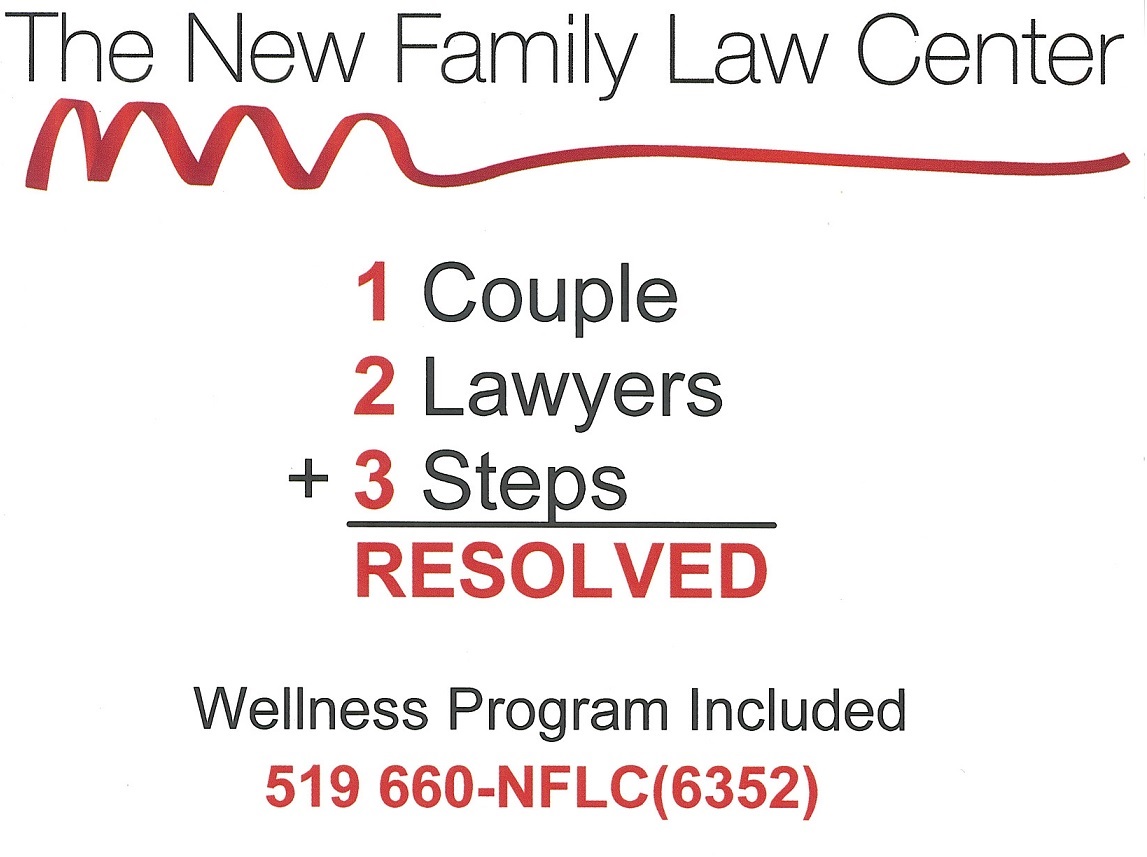I saw this article years ago, and I finally found it again. It’s an excellent study about in-flight emergencies which could be extremely helpful if you’re involved in advocacy to protect the safety of allergic passengers on airplanes. I’m very interested in this topic as many of my readers know, I started a petition to remove peanuts and nuts from airlines, which now has over 5,000 signatures.
You have to love a report that evaluates an unusual evaluation of in-flight emergencies and deaths…based on the unauthorized release of tabulations normally maintained under tight security by the International Air Transport Association. There were 577 deaths worldwide over an eight year period.
The man responsible for the security leak, Dr. Peter Chapman, caused it in part because he feels airlines appear to be blind to the ways survival rates could be improved and think that in-flight deaths and emergencies are few in number, random and unpreventable. Allergic reactions are discussed as one of the kinds of emergencies that do occur on flights: “Serious and potentially fatal allergic reactions, including at least 3 cases of acute allergic reactions to peanuts, were common with 10 potentially catastropic cases“ It is also reported that emergency first aid kits were used 362 times in one year on United Airlines with passengers unconscious, in seizure, or having allergic reactions, and 5 deaths occurred. The number of people in the air at any given moment is 150,000, and it is clear that the is a significantly different frequency of emergencies in the sky than in a city of 150,000 at any given moment.
A follow up of 51 United passengers who were seriously ill on flights that arrived at O’Hare found that 32 patients were admitted to hospital following their flight. Symptoms ranges from fainting, chest pains, kidney stones, and unexplained shortness of breath were the major complains. Interestingly, a total of 45% of the international deaths analyzed were from heart attacks, while another 12% were simply described as having “collapsed and died.” Could they have collapsed and died from anaphylaxis? I think so.
The FAA “reluctantly” upgraded the contents of emergency kits to include adrenaline (epinephrine) in 1986 following congressional hearings focusing on the adequacy of in-flight medical provisions. Not even a stethoscope, blood pressure gauge, or a needle was on flights before. Doctors and consumer groups had addressed concerns about their adequacy as health care workers on board are often called upon to respond to in-flight emergencies. This study was prepared in 1988 as part of monitoring the new FAA regulations.
This is the link to the article I have referenced is here. The link to the published study in the Journal of the American Medical Association (JAMA) is here. As many of the article I cite become dead links, I have also reproduced the text of the article below:
Stricken in the Cabin : New Studies on In-Flight Emergencies and Deaths Quietly Fuel an International Debate
April 01, 1988
The Boeing 747 carrying Maj. David Burgess, an orthopedic surgeon assigned to Clark Air Force Base in the Philippines, had reached cruising altitude en route to Tokyo from Seattle when the tranquility of the coach cabin was shattered by a commotion near him.
A man in his late 60s was having a catastrophic heart attack.
For the third time in his medical career, Burgess, 33, was called to respond to an in-flight emergency. This would be the worst of all.
He quickly jerked the man having the heart seizure out of his seat and onto the floor while the Northwest Airlines pilot, an hour west of the Seattle-Tacoma International Airport, abruptly threw the plane into a sweeping U-turn.
Burgess organized himself, a Marine Corps enlisted man and four others into teams to administer cardiopulmonary resuscitation–a desperation approach that represented all Burgess could do to try to cope with the emergency, which would last, he said, an hour and 45 minutes.
Paramedics met the plane when it landed, and although the patient showed signs of a faint pulse, his condition quickly deteriorated and he never regained consciousness.
“I had the same feeling as after you lose any patient,” Burgess recalled in a telephone interview last week from the Philippines. “More than anything, a sense of feeling sorry for the family and for the patient and the frustration that you weren’t able to accomplish what you set out to accomplish.”
How often scenes like this are repeated on airliners remains, to a large degree, unknown. But the curtain is starting to lift.
– An unusual evaluation of in-flight deaths, published today and based on the unauthorized release of tabulations normally maintained under tight security by the International Air Transport Assn. shows there were almost 600 such deaths worldwide over an eight-year period.
– The FAA has completed tabulation of airline reports on in-flight emergencies nationwide between Aug. 1, 1986 and July 31, 1987, that showed there were 1,016 emergencies, eight deaths and 89 emergency diversions.
But the FAA data has roused skepticism even within the federal agency, which says anecdotal previous projections suggested death rates three times higher than what the airlines reported.
And the man responsible for the IATA security breach, Dr. Peter Chapman, medical director for British Caledonian Airlines, speculated that the international total is almost certainly a significant understatement of a death toll that probably exceeded 1,000 in the period in question.
Violation of Secrecy
Chapman violated the secrecy provision, he said, in part because he feels airlines appear to be blind to the ways survival rates could be improved and think that in-flight deaths and emergencies are few in number, random and unpreventable.
“The idea has been, I think, that these figures are a good thing, of themselves, to collect,” Chapman said in an interview last week, “but not so much to do anything with. The problem with looking after ill people in an aircraft is a real one. In my view, (airlines) do think about it, but that it’s not much you can do anything about. (The attitude is) ‘ c’est la vie, ‘ or, in this case, death.”
The summary of the tabulations, by an American-English medical research team that included not only Chapman but one of the top U.S. experts in CPR and emergency cardiac care, appears in today’s issue of the Journal of the American Medical Assn. The data shows a worldwide total of 577 in-flight deaths between 1977 and 1984.
The average of 72 deaths a year, however, is thought by the researchers to represent a vast understatement of the international death toll. The study team recommended improved crew training and equipping planes with newly developed automatic devices that deliver electrical shocks to restart hearts.
Chapman was interviewed in Los Angeles, where, ironically, he was attending a closed meeting of a group of IATA medical directors at Centinela Hospital. He said his decision to bring the international data to public attention was motivated at least in part by his impending retirement.
Dr. Richard Cummins, the University of Washington expert who was one of the leaders of the analysis being published in JAMA, said a computerized review of the FAA data, conducted for The Times, indicates that reports to the federal agency counted one death twice, leaving a total of only seven fatalities.
The FAA report, which was designed to study the first year’s use of an expanded airliner first-aid kit, indicated the agency took a narrow view of the death toll, omitting from the totals even cases in which the airline reports indicated a passenger stricken on a plane later died in a hospital.
Cummins said the airline figures are almost surely an underestimate “by several factors” of the actual toll of deaths and emergencies in the air.
He said a review of the seven deaths indicates on-board electric shock machines–called defibrillators–could probably have saved the majority of the victims.
But the report also gave one of the first detailed views of the kinds of emergencies that do occur in flight.
Serious and potentially fatal allergic reactions–the FAA data included at least three cases of acute allergic reactions to the peanuts airlines serve with drinks–were common, with 10 potentially catastrophic cases, Cummins said. Chest pain that may have been a precursor of a heart attack was also common, along with insulin reactions in diabetics and asthma attacks. Physicians on board who used first-aid kits were responsible for 26 possible saved lives in acute emergency situations, Cummins’ analysis indicated.
At the FAA, an official who doubted the accuracy of the airline death toll data said a more sophisticated analysis is about to begin.
“I’m somewhat skeptical about whether it is (a complete count of the deaths),” said Dr. Jon Jordan, the FAA’s deputy federal air surgeon. “Based on previous information available to us, it would appear the death rate you would expect to see would be in the vicinity of 20 a year.” He said the FAA intends to review the situation.
The FAA report also indicates that Trans World Airlines and Pan American World Airways provided brief summaries instead of the complete data reports required. Eastern Airlines submitted a report mentioning 81 “occurrences” but provided so little detail that it was not included.
In addition, a Times’ survey of other airlines found that American Airlines reported an average of one death on board for each 6 million to 7 million passengers–it transported 54 million last year. British Airways said that in the 12 months that ended in April of 1987, it had 21 deaths on board–all of them among passengers with no previously known medical problems. Lufthansa Airlines said it averages eight to nine deaths a year in flight.
An analysis of in-flight emergencies on United Airlines, conducted by a University of Illinois researcher, provides even more fascinating detail on the subject.
There were five deaths among passengers in a one-year period. Emergency first-aid kits were used 362 times, with passengers often unconscious, in seizure or having allergic reactions.
The survey, which for the first time tried to follow up on people who had medical problems on board after they left the United planes, found an array of medical developments.
Dr. Joseph Cottrell of the University of Illinois College of Medicine in Chicago said acute emergencies were virtually unheard of on flights of 500 miles or less but more frequent on flights of more than 1,000. Cottrell said he followed up in detail on 51 United passengers who were seriously ill on flights that either were bound for Chicago’s O’Hare Airport or were diverted there. Seventeen of the passengers ended up at Resurrection Hospital, which receives virtually all ambulances from Chicago’s O’Hare Airport, Cottrell said.
Data from Resurrection, Cottrell said, showed that 32 patients were admitted, and they remained there for from just a few hours to 60 days. Fainting, chest pains signaling possible heart attacks, kidney stones and unexplained shortness of breath were major serious complaints. Cottrell said none of the United patients died in the hospital.
All the emerging data amounts to a far more detailed picture of in-flight emergencies than has ever before been available and points to a reality that both is and is not surprising.
On the one hand, Cummins said, it is clear that greater numbers of dire medical emergencies than some experts have previously thought occur on airliners, many of which have great potential for successful medical intervention because the tight quarters in the passenger cabin make it highly likely a victim will be discovered quickly.
But on the other hand, he said, emergencies are still quite rare and probably do not occur in the sky with significantly different frequency than in a city of 150,000 at any given moment–the number of people he estimated are in airliners at any one moment.
In early 1986, after a series of congressional hearings focusing on the adequacy of in-flight medical provisions, the FAA reluctantly moved to require airlines–which initially resisted–to equip planes with expanded first-aid kits that include a stethoscope and blood pressure gauge, nitroglycerin tablets, needles and syringes, Adrenalin, sugar water and an injectable anti-allergy medication. There are no narcotics.
The new kits addressed some of the concerns voiced by doctors and consumer groups who had complained that physicians, nurses and other health care workers responding to in-flight emergencies often found airliners lacked even equipment for basic medical evaluation.
Airlines argued that U.S. domestic flights are seldom more than 30 minutes from an airport at which they can make an emergency landing and that doctors on board might be tempted by the presence of more complete first-aid kits to continue on to a flight’s original destination when a diversion would be more appropriate. The airlines also expressed fears about their legal liability in the absence of a so-called federal “good Samaritan” law.
In the end, the new FAA regulation took effect, for a two-year period in which the FAA is supposed to be closely monitoring developments. Jordan said the FAA will probably not propose any enhanced safety regulation for at least another year–until all data gathered in the study have been processed.
Question of Responsibility
“It is a question (for airlines) whether or not they want to assume some responsibility for the events that take place inside those metal tubes of aluminum when they cram them full of people who are captured for hours at a time,” Cummins said in an interview in Seattle.
“The fair question,” Cummins said, “is (whether) during the period of time when the airlines have you trapped, is there any preparation at all for the common, everyday sort of events that might occur in a community of 150,000 people at any one time.
“There are just a lot of people flying. Passenger volumes are just skyrocketing. Our data are probably already out of date. The numbers of departures and passengers carried may have gone up 50% since then. Given the sheer numbers of people flying, I think we’ve got a real problem.”
Paramedics familiar with the human responses of sick airline passengers agreed–perhaps identifying another unquantifiable mystery of medical emergencies aloft. Cliff Runyen, a Los Angeles City Fire Department paramedic who has worked extensively on a rescue ambulance that handles most calls to Los Angeles International Airport, said passengers are notoriously unwilling to accept hospitalization.
One recent morning, Runyen and paramedic John Keyes responded three times to passenger terminals at LAX, where a kidney stone patient and a possible heart attack victim both refused hospitalization and an 82-year-old woman whose blood pressure had dropped seriously reluctantly agreed. The Fire Department has no data on the number and variety of airplane-related medical events it responds to, but paramedics say the airport averages five calls a day to meet incoming aircraft with a possible on-board emergency.
To Runyen, it’s a human problem.
“They worry about things like the people waiting for them at their final destinations and whether their bags are on the plane already,” he said. “And if you ever get someone who is just making a stop here, it is almost impossible to get off the plane and accept medical treatment.”
Cummins and Chapman are among the best-known advocates of equipping aircraft with defibrillators. A total of 45% of the international deaths analyzed by Cummins were from heart attacks, while another 12% were simply described as having “collapsed and died.”
Cummins said the study had also found that a common impression of physicians–that people who die on airplanes had terminal illnesses when they boarded–was not supported by available airline data. In fact, 79% of the dead victims were reported to have been in good health.
He said existing first-aid kits could be enhanced by adding two or three drugs but that defibrillation is the best hope for saving large numbers of people who now die in flight. Lightweight defibrillators automatically evaluate a person’s heart activity and decide if an electric shock is appropriate. Cummins said the equipment does not pose a shock hazard and will not interfere with airliner navigation systems.
‘Most Dramatic Problem’
“Sudden death is unquestionably the most dramatic problem that occurs in flight,” he added. “I think it’s significant enough to do something about. What do you do?
“You can teach flight attendants CPR but in my view, that is totally useless, wasted if you can’t restart the hearts. What CPR does is to keep brains in business until better times come. Better times come only with electric shock.
“If I drop over (right here at an airport hotel), you can do me a great favor by doing CPR until the paramedics arrive. But if we’re at the North Pole, you might as well leave me. The aircraft at cruising altitude with the doors shut is just like the North Pole. You either carry (the electric shock capability) with you or forget about it, put a copy of The Times in their hand, prop them up and hope nobody notices, or else you address the problem.”
Chapman and Cummins noted that even if an airplane is within 20 minutes of an airport, a passenger supported only by CPR will almost surely die because his or her heart remains inoperative during the emergency landing.
Medical opinion is not unanimous, however. The American Medical Assn. has so far declined to take a strong position on on-board defibrillation, having decided in 1986 to await results of the two-year FAA data-gathering program before considering the question again.
Lingering Skepticism
Airline medical officials and some independent researchers are skeptical of the concept. Dr. Lawrence Marinelli, chairman of the medical directors’ committee of the Washington-based Air Transport Assn., said industry physicians aren’t convinced of the need for defibrillation. Marinelli, a consultant to Trans World and Continental airlines, heads a clinic at LAX.
“My feeling is that people who die on airplanes are probably people who are near death and they’re probably dying because they were going to die, anyway,” Marinelli said. “Whether the deaths are preventable is very questionable.”
Marinelli said he is not convinced that even further study will be productive. “If somebody had chest pains and later went on to the hospital and was found to have coronary artery disease, would we do anything differently? It sounds like more of a curiosity,” he said.
Marinelli said U.S.-flag air carriers resist putting defibrillators on board because of feared legal liability problems. He noted that Chapman tested the machines on British Caledonian aircraft but there were no cardiac arrests during the 18-month program and the test ended with no data on effectiveness.
Dr. Robert Wick, medical director for American Airlines, said the rarity of on-board emergencies may not justify greater ability to care for victims. “It becomes a matter of what is a reasonable thing to do,” Wick said. “I would point out that a Boeing or a Douglas airliner is not the primary entry point to the medical care system in the U.S.”
But to Dr. Mitchell Karlan, a Beverly Hills surgeon and past president of the Los Angeles County Medical Assn., in-flight calls for assistance have become disturbingly frequent. In recent years, he said, he has responded to five emergency announcements on planes. The experience has made him one of the American Medical Assn.’s most tireless advocates of on-board defibrillation capability and expanded first-aid kits.
Ninety minutes out of Los Angeles on a Pan Am flight from New York about a year and a half ago, Karlan recalled, he heard the public address system plea again. He was traveling in business class and a flight attendant led him to first class where a man was turning blue in his seat.
“I tore him out of the seat and threw him on the floor and started giving (CPR),” Karlan recalled, “and then I asked for oxygen, which I couldn’t get. Then suddenly, he started to take some breaths and his color came back.”
Karlan realized while this was happening that he knew the victim. The man was a member of a suburban school board.
“As he opened his eyes, he looked up at me and he said, ‘Mitch, what in the hell are you doing in first class?’ “
I would love for you to share this article by e-mail, Facebook, or Twitter. You can use the Sharing Is Caring buttons below, or copy and paste this link: http://blog.onespotallergy.com/2013/10/an-extremely-helpful-study-on-in-flight-emergencies-and-deaths/









“Chest pain that may have been a precursor of a heart attack was also common, along with insulin reactions in diabetics and asthma attacks.”
I would not be surprised if some of the “asthma attacks” were actually anaphylactic reactions. Even asthma sufferers, themselves, may mistake an anaphylactic reaction for a severe asthma attack, with dire consequences. In ER/hospital settings I believe it is grossly misreported, as well.